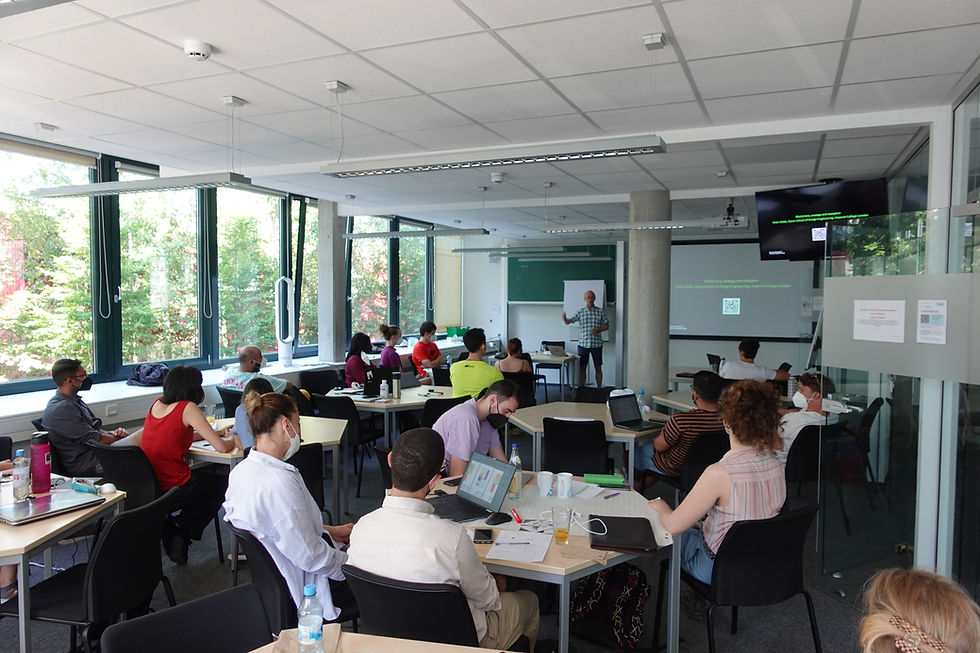By Annachiara Ceraso

As a masters degree student in Engineering for the Environment and Landscape at the University of Naples “Federico II”, I was keen to attend the TUHH-hosted CIRCuIT summer school in Hamburg to deepen my understanding of how to apply the circular economy to the built environment, and for the chance to meet like-minded people - students, doctors, and professors - to share opinions and knowledge.
Certain topics covered during the summer school were already familiar for some of the participating students, such as new ways of approaching the demolition process, through pre-demolition audit schemes, or the use of Life Cycle Assessment tools to establish the environmental impact of buildings and other infrastructure; but the lectures and activities organized by the CIRCuIT team at TUHH gave us the chance to approach them from a different perspective. We learned new subject matter and studied practical examples connected to three main aspects of the construction industry: demolition, construction and environmental impact evaluation.
Thinking innovatively to overcome demolition challenges
First of all, we studied demolition and explored pre-demolition audit schemes. Involving many stakeholders, pre-demolition audit schemes are designed to reduce the amount of waste produced during demolition activities by identifying materials or even entire structural elements that can be reused and, as a consequence, yield an economical profit and environmental benefits from materials that would otherwise be wasted. Our task was to find ways to improve the demolition process and overcome the current industry barriers to reuse, prompting us to think innovatively and share out-of-the-box ideas, such as the use of drones with cameras in order to conduct virtual pre-demolition audits in safety hazardous structures.
Designing buildings for adaptability
Circular construction principles advocate for life cycle extension through transformation and refurbishment. We learned how designing buildings in a way that allows them to be used over and over, for different purposes and by using materials that can be easily removed and be reused elsewhere is a key facet of applying the circular economy for the built environment. To see an example of this in practice, we visited a decommissioned multi-storey car park that is undergoing development to be readapted into a multi-functional social housing development. The project aims to re-using as much as possible of the original structure and add natural elements in the shared spaces, as well as a grocery store for the future inhabitants.
Using Life Cycle Assessments to make better decisions
Finally, the last topic we studied was using Life Cycle Assessments (LCA) to determine whether to demolish or reconstruct a building. Indeed, the main purpose of LCA is to understand the energy use and other environmental impacts associated with all the phases of a building’s life cycle: procurement, construction, operation, and decommissioning, and use this information to inform decisions that reduce a building’s environmental impact. In our case, we carried out an LCA for an existing building to define whether demolishing and building something new from zero would be better or worse environmentally than retrofitting the current structure.

Consolidating learnings to apply in practice
The summer school provided us with incredibly valuable new knowledge, and allowed us to apply that knowledge in practice, through a practical exercise of imagining how to reuse an old building and how to conduct a selective demolition of the internal elements of the building; how to redesign it to carry out a completely new function; and how to use the LCA to establish the environmental impact of our choices.
I most valued the constant exchange of ideas, questions and opinions between the students, the professors and the experts. Thanks to this summer school I had the chance to meet and learn from people with high levels of expertise on the subject of circular construction, and I am excited to apply my learnings in practice to support the creation of regenerative cities by implementing sustainable and circular construction practices.
Annachiara Ceraso is a Masters Degree Student in Engineering for Environment and Landscape at Università degli Studi di Napoli Federico II.
To stay up-to-date with the latest CIRCuIT project news, you can sign up for our newsletter, here. Or follow us on social media: Twitter | LinkedIn.

Comments